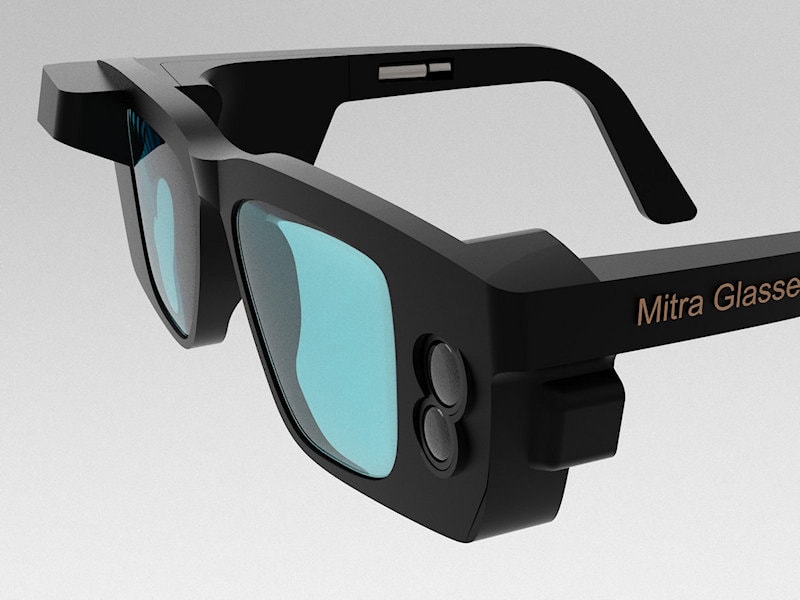Discover Advanced Assistive Devices for People With Visual Disabilities
The landscape of assistive innovation for individuals with aesthetic problems is evolving rapidly, providing a range of cutting-edge devices that improve autonomy and involvement. From smart glasses that effortlessly merge visual input with acoustic guidance to innovative navigation applications that redefine spatial awareness, these devices are improving possibilities.
Smart Glasses Innovations
Smart glasses represent a significant improvement in assistive technology for people with visual disabilities. These innovative devices integrate numerous attributes developed to boost the customer's interaction with their atmosphere. Outfitted with cameras and sensing units, wise glasses can record real-time visual info, which is then refined and conveyed to the user with sound feedback or haptic sensations. This capability permits individuals to obtain instant summaries of their environments, improving their capability to engage and navigate with the world.
Moreover, innovations in artificial knowledge have even more improved the capacities of clever glasses. Device learning formulas can identify faces, reviewed text, and identify things, making them invaluable devices for everyday jobs. Individuals can receive auditory hints that give context concerning their setting, fostering self-reliance and self-confidence.
Additionally, the ergonomic design and light-weight nature of many clever glasses make them suitable for extended use, ensuring comfort while enhancing performance. As these gadgets continue to evolve, they hold the possible to reinvent the way people with aesthetic impairments experience their day-to-day lives, bridging the gap in between ease of access and technology. The recurring r & d in this field pledge to broaden the opportunities for clever glasses, making them a vital component of modern-day assistive gadgets.
Navigating Apps and Tools
Many navigation applications and tools have emerged as necessary resources for individuals with aesthetic disabilities, considerably enhancing their capability to pass through unknown atmospheres. These modern technologies take advantage of GPS performance, audio signs, and real-time information to provide users with accurate navigation support.
One famous example is the Aira application, which links customers to qualified agents that can supply aesthetic descriptions of environments and navigating support via a live video clip feed. This service enhances the individual's spatial awareness and self-confidence while browsing. Another significant tool is Seeing Eye GPS, which supplies voice-guided navigation and factors of passion, allowing individuals to access important details concerning their environments.

As technology remains to advancement, the development of more advanced navigating tools assures to additional empower individuals with visual impairments, promoting smooth movement and combination into varied atmospheres. Such developments are instrumental in advertising a much more comprehensive culture.
Braille Modern Technology Advancements
Recently, advancements in Braille technology have actually significantly changed how individuals with aesthetic impairments access details and engage with the globe around them. The development of mobile Braille display screens has actually changed analysis by enabling users to connect wirelessly to smart devices, computers, and tablets. These devices transform text into Braille in real-time, allowing smooth communication with electronic content.
Moreover, cutting-edge Braille printers have arised, boosting the production of responsive materials. Modern embossers are much faster and much more reliable, permitting the fast development of Braille records and educational products. This performance lowers the time and price connected with producing Braille resources, making them much more obtainable to companies and schools.
In addition, the assimilation of Braille with various other modern technologies, such as expert system and maker learning, has opened new opportunities for customized understanding experiences. Voice acknowledgment and synthesis innovations can match Braille, giving a comprehensive approach to details circulation.
As the demand for inclusive education and office environments grows, these technological improvements play an important duty in equipping people with aesthetic problems, ensuring they have equivalent accessibility to details and opportunities in various aspects of life.
Wearable Tools for Freedom
An expanding range of wearable devices is boosting freedom for people with aesthetic disabilities, supplying innovative solutions that boost navigating and daily living. Braille displays and notetakers. These tools make use of advanced modern technologies to provide real-time comments and support, advertising autonomy in various settings

Wearable innovation also consists of smartwatches that can be programmed with access attributes, allowing individuals to get alerts, track their locations, or even require assistance with the touch of a switch. Additionally, some gadgets include expert system to evaluate the setting, offering sound summaries of close-by objects or people.
Voice-Activated Assistive Solutions
Leveraging voice-activated assistive remedies has actually transformed the landscape of assistance for individuals with aesthetic disabilities, supplying hands-free communication and access to a range of jobs. These modern technologies utilize home natural language handling and expert system to make it possible for users to do everyday activities with straightforward more information voice commands.

Furthermore, recent innovations in voice acknowledgment precision have actually boosted the individual experience considerably, suiting varied accents and speech patterns. This inclusivity guarantees that more individuals can take advantage of these modern technologies, promoting a better feeling of autonomy.
Verdict
To conclude, the growth of innovative assistive devices dramatically improves the independence and lifestyle for individuals with aesthetic problems. Advancements such as clever glasses, navigating apps, Braille innovation, wearable devices, and voice-activated options jointly promote a more inclusive atmosphere. These technologies equip individuals to browse their surroundings with confidence and involve more fully with the world, ultimately promoting greater accessibility and equivalent chances for people encountering visual obstacles.
The landscape of assistive technology for individuals with visual disabilities is evolving swiftly, offering a range of ingenious tools that enhance autonomy and involvement.Smart glasses represent a substantial advancement in assistive technology for people with aesthetic problems. As these tools continue to evolve, they hold the prospective to reinvent the method individuals with aesthetic disabilities experience their day-to-day lives, linking the gap between ease of access and technology.In this website current years, developments in Braille innovation have actually considerably changed exactly how people with visual impairments access information and involve with the world around them. These modern technologies encourage users to navigate their environments with confidence and involve more fully with the world, eventually promoting higher access and equal possibilities for individuals encountering visual obstacles.